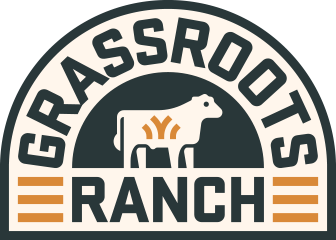It's All About That Grass!
How much do you know about grass? I openly admit I didn't know much about grass before my time with Grassroots. Just like any other plant, grass has a cycle of life. But have you ever stopped to think how important that single plant cycle is to a grass-fed beef operation such as ours? Or have you given much thought to how important the animals are in ensuring a healthy soil ecosystem?
Every year in late August/early September, we mow our pastures. We do this twice a year for a handful of reasons. One is, it allows more sunlight to hit the cool-season grasses that are just now beginning to germinate and take root. It also helps to manage weeds that we don't want in our pastures. Another big reason why we do this is to help the soil. Mowing instead of bailing the grass allows the cut grass to remain in the fields and be absorbed back into the soil as organic matter. In addition, when a grass plant has grown tall and is just about to go to seed, it has an extensive root system supporting it. When we mow the grass down, it becomes a much smaller plant, and it no longer needs such a comprehensive root system. The plant will then shed itself of the not-needed root, turning that excess root into organic matter for the soil too. The grass growing cycle plays a large part in why we choose to mow at this time of year.
Before becoming very passionate about where my food came from and before meeting Daniel and Maria when I thought of grass-fed beef, I just thought of a cow eating grass, simple as that. I never gave much thought to how the cow plays a vital part in having quality grass. Grazing cows the way we do, has a considerable impact on the land. Those of you that garden know how essential fertilizer is to maintaining quality and optimal yields. The same thing goes for growing grass. Rotating the cows from paddock to paddock helps us maintain the pastures, leaving behind their magic waste. Which in return helps create healthy, diverse grasslands with deep root systems that take in carbon from the atmosphere and store it deep underground, where it rebuilds valuable topsoil.
This is only our second summer on our new property; we have seen significant improvement from last year's warm grass season to this year. Which only makes us even more excited to continue our land management routine to see what is in store for us next year!
